Masterpiece Story: L.O.V.E. by Maurizio Cattelan
In the heart of Milan, steps away from the iconic Duomo, Piazza Affari hosts a provocative sculpture by Maurizio Cattelan. Titled...
Lisa Scalone 8 July 2024
Double-Headed Serpent is a masterpiece of Aztec art that combines religious and commercial significance. It is filled with hidden allusions under a glossy exterior of turquoise and shells.
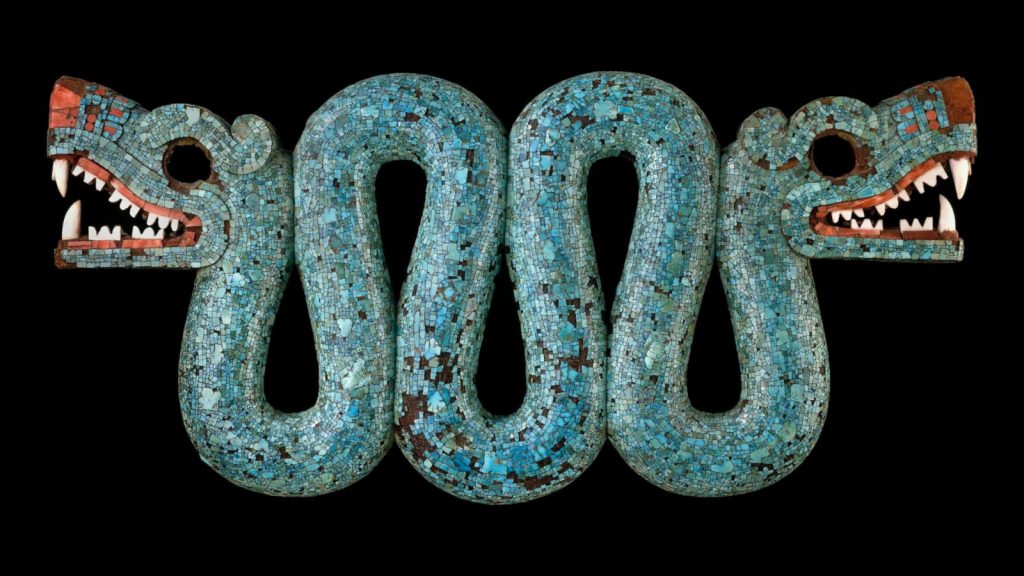
Double-Headed Serpent, ca 1400-1521, mosaic on wood, British Museum, London, UK.
The Aztec civilization existed in central Mexico from about 1300 to 1521. It is one of the most famous Pre-Columbian societies because of its many surviving examples of art and architecture. Almost every major Pre-Columbian collection in museums will feature some Aztec pieces. However, some examples standout as masterpieces of Aztec artistry: Double-Headed Serpent in the British Museum is one such masterpiece.
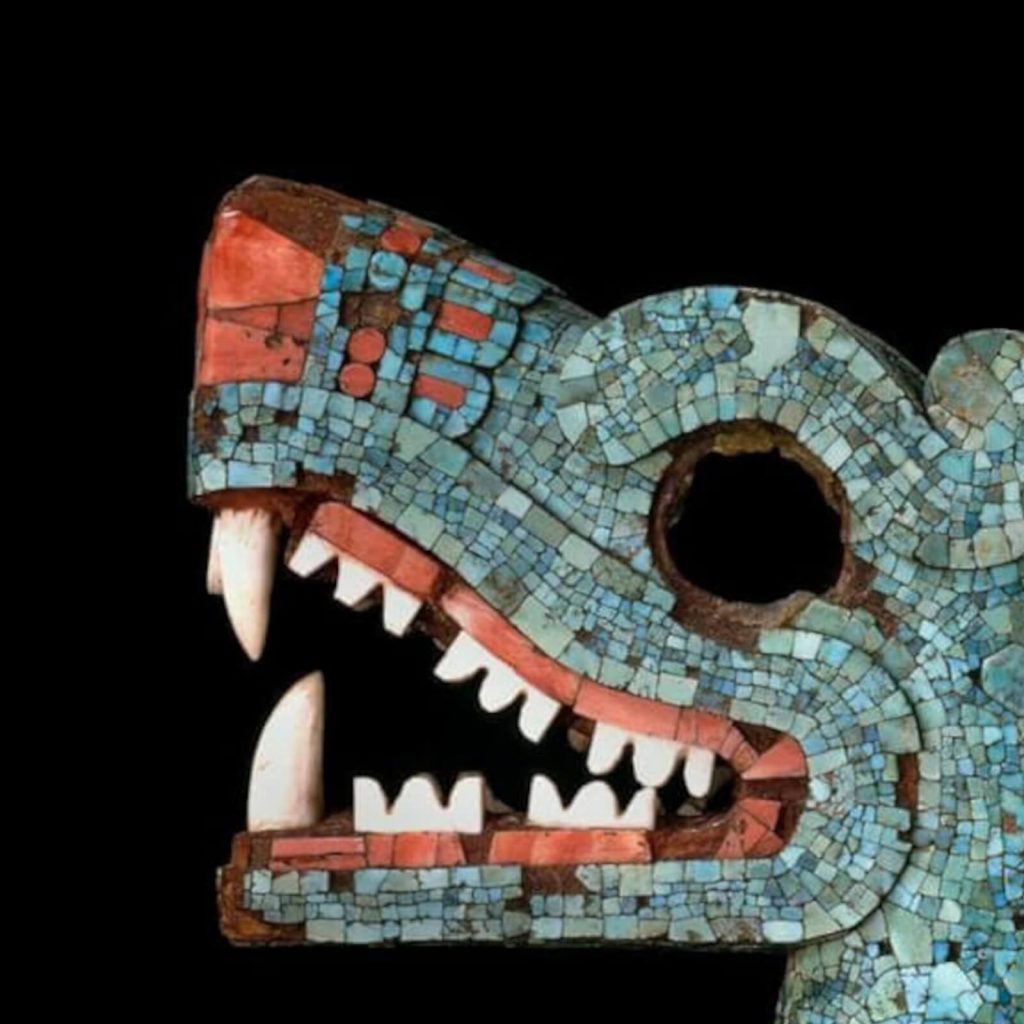
Double-Headed Serpent, ca 1400-1521, mosaic on wood, British Museum, London, UK. Detail.
Double-Headed Serpent is a pectoral that would have been worn on the chest, suspended by a chain around the wearer’s neck. It measures 43.30 centimeters (17.05 inches) wide, 20.30 centimeters (7.87 inches) high, and 5.90 centimeters (2.32 inches) thick. The sculpted jewelry features conjoined snakes with heads on each extremity.
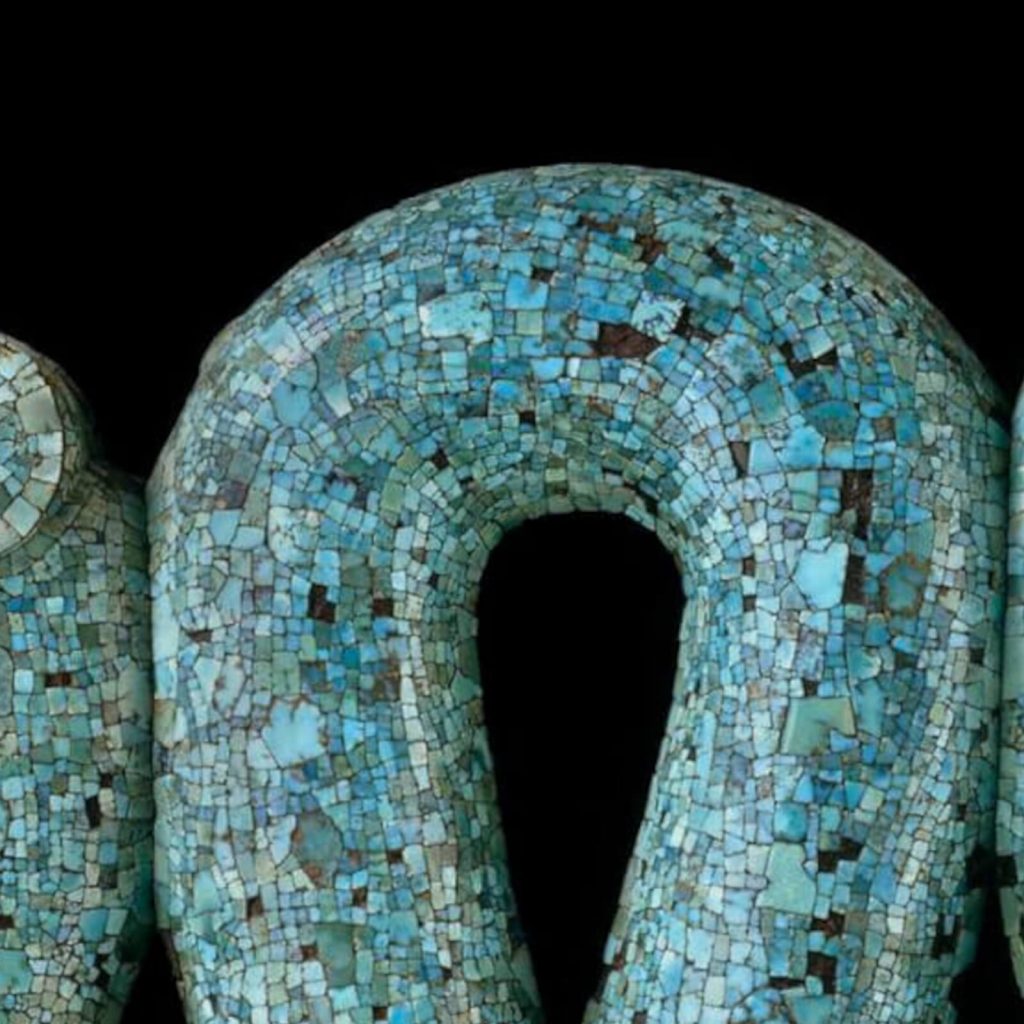
Double-Headed Serpent, ca 1400-1521, mosaic on wood, British Museum, London, UK. Detail.
The snake’s form is made from a core of Spanish cedarwood (Cedrela odorata) covered by a mosaic of small turquoise tiles. Small pieces of red thorny oyster shell (Spondylus princeps) create the red areas of the nostrils and the gums. Additionally, large jagged pieces of conch shell (Strombus galeatus) generate the pointed teeth. All of the stone and shell segments are glued to the wooden core by pine resin (Pinus teocote) and copal resin (Bursera copallifera) with beeswax once holding pyrite or obsidian eyes. Flickering tongues, now missing, also once protruded from the mouths as indicated by holes in the lower jaws. The original overall effect would have been the impression of a living mythical creature.
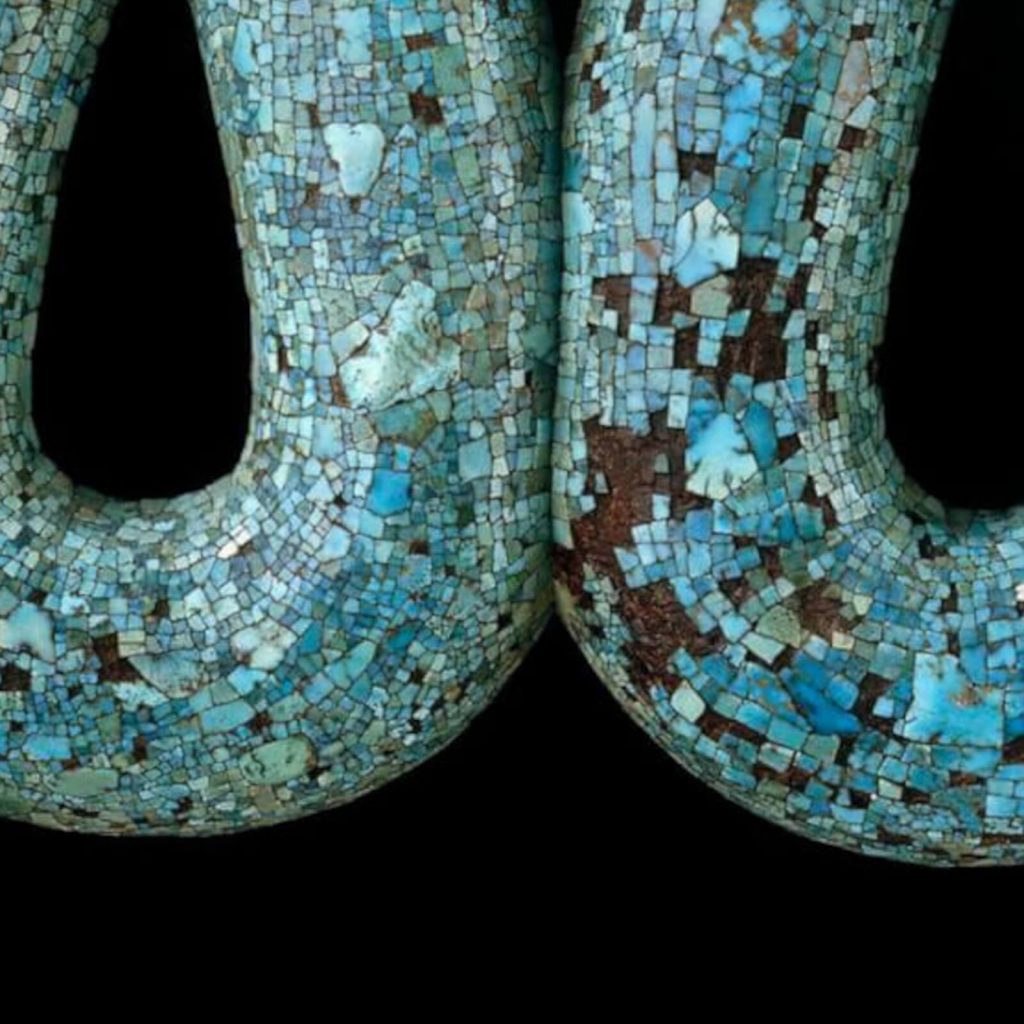
Double-Headed Serpent, ca 1400-1521, mosaic on wood, British Museum, London, UK. Detail.
Originally the pectoral would have belonged to an elite person such as an aristocrat or priest. It would have acted as an emblem of authority to be worn during religious holidays and ceremonial festivals. It had deeply divine associations with the god Quetzalcóatl, one of the most powerful Aztec deities; Xiuhcoatl, the turquoise fire serpent associated with celestial events; and Tlaloc, the god of fertility and water. Also because a double-headed serpent, a maquizcoatl, was also thought to be a bearer of bad omens, it is believed that this pendant may have been worn by a priest during a human sacrificial ceremony. Whatever its original religious context may be, it certainly was not a secular piece for daily wear.
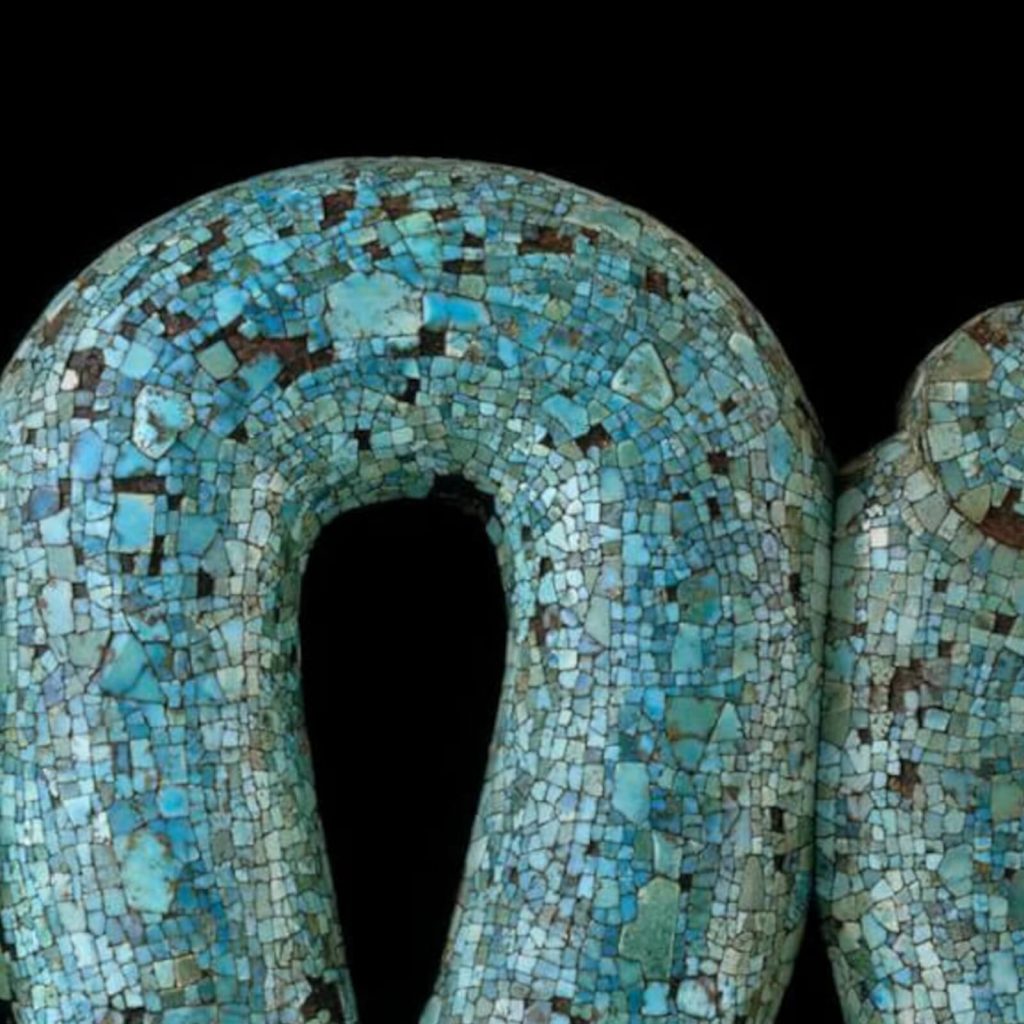
Double-Headed Serpent, ca 1400-1521, mosaic on wood, British Museum, London, UK. Detail.
Double-Headed Serpent is a symbol of Aztec commerce. It reflects the powerful trade networks the Aztecs once controlled. Turquoise, the serpent’s prominent mosaic material, was mined in the area of modern-day southwestern United States, far outside the borders of the Aztec Empire. Therefore, such a long-distanced material was imported and expensive to the Aztec population. The oyster and conch shells in the piece also imply coastal trade connections. The pine and copal resins confirm interior forested domains. Thus the Double-Headed Serpent represents a conglomeration of materials from three distinct regions inside and outside the Aztec civilization.
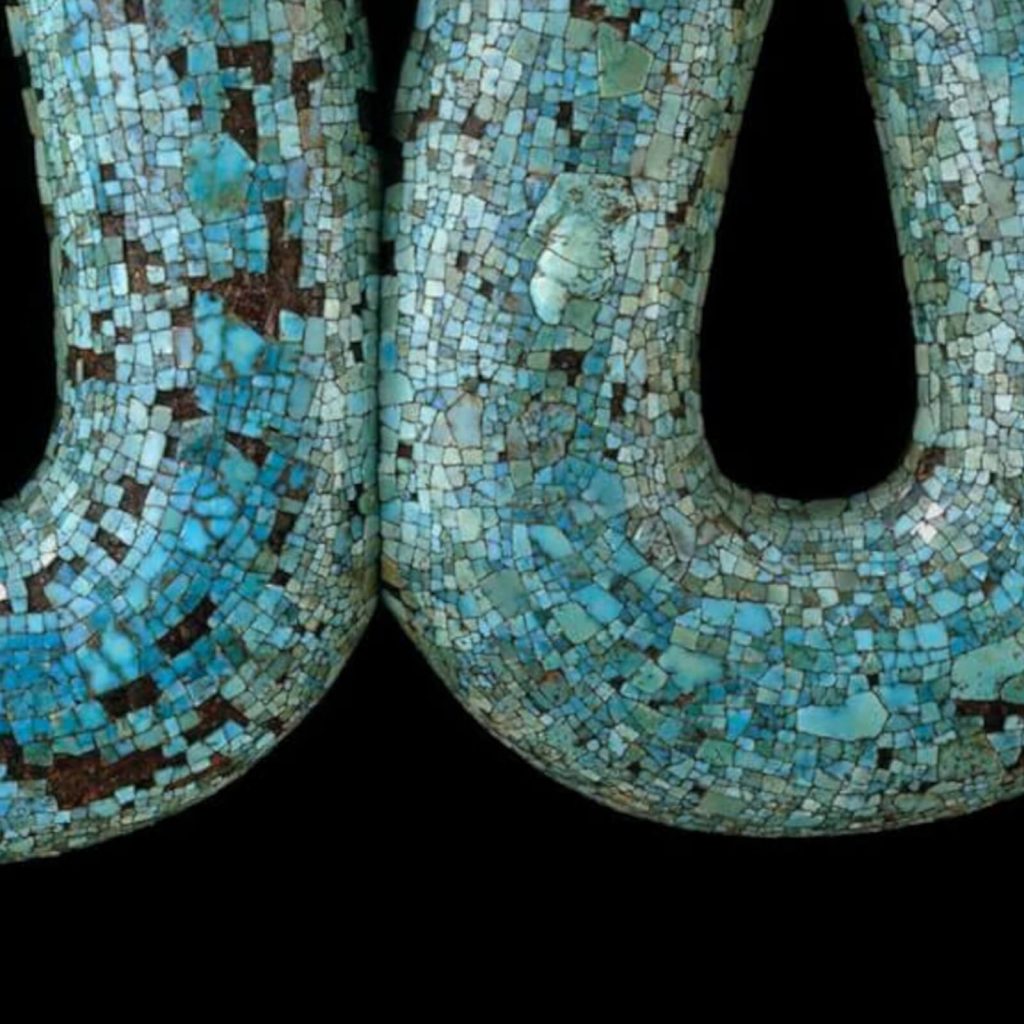
Double-Headed Serpent, ca 1400-1521, mosaic on wood, British Museum, London, UK. Detail.
Double-Headed Serpent is a masterpiece of Aztec art. It represents a powerful Aztec deity that once was the center of a complex religion. It indicates a wide-reaching empire through its materials. Lastly but not least importantly, is the physical beauty of the object. It has a sophisticated elegance that encapsulates the energy of the majestic Aztecs. Sadly, the once mighty empire that produced this work ended in 1521 under the Spanish Conquistadors. However, its cultural legacy still lives today through many Aztec descendants in modern Mexico and surviving artworks found in museums around the world. The Aztec empire may have physically collapsed, but its spirit continues to live on through its art.
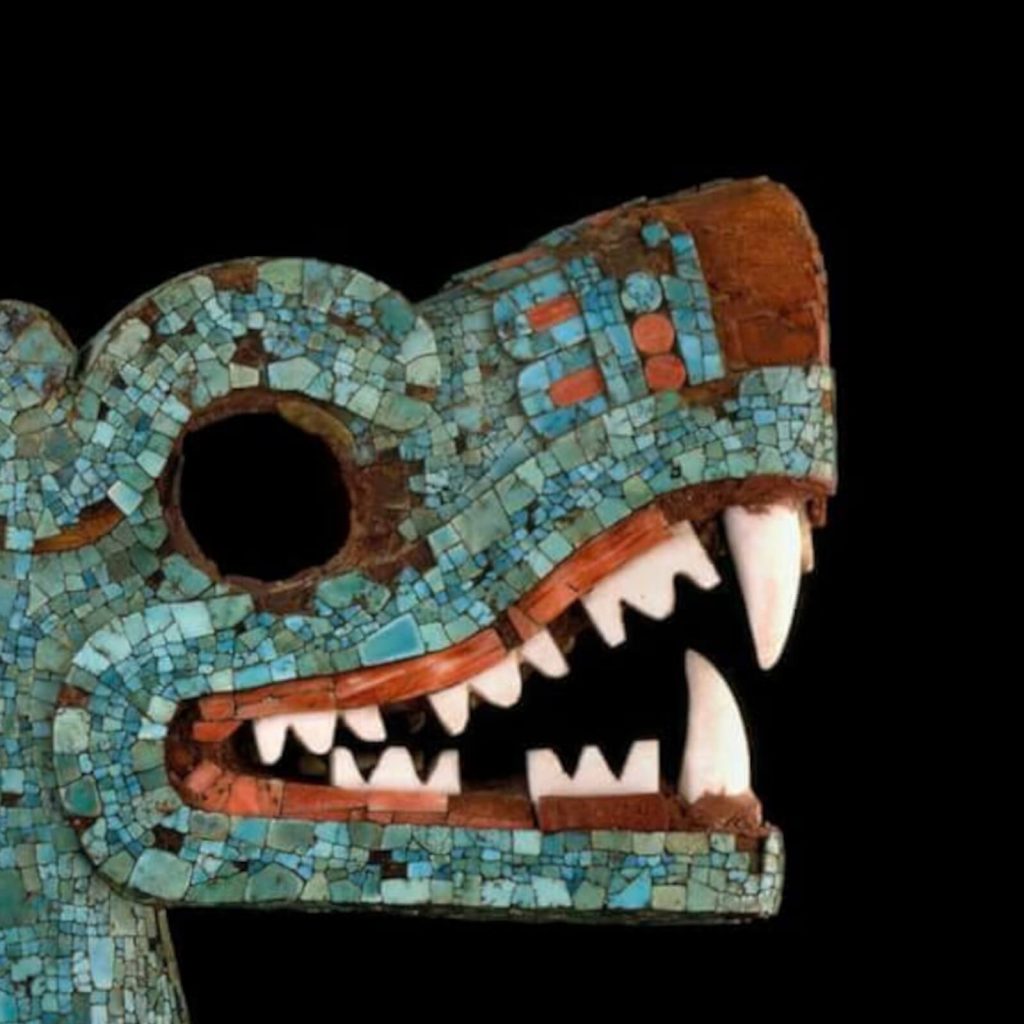
Double-Headed Serpent, ca 1400-1521, mosaic on wood, British Museum, London, UK. Detail.
“Double-Headed Serpent.” Collection. British Museum, London, UK. Retrieved 25 March 2023.
Gardner, Helen, Fred S. Kleiner, and Christin J. Mamiya. Gardner’s Art Through the Ages. 12th ed. Belmont, CA: Thomson Wadsworth, 2005.
DailyArt Magazine needs your support. Every contribution, however big or small, is very valuable for our future. Thanks to it, we will be able to sustain and grow the Magazine. Thank you for your help!